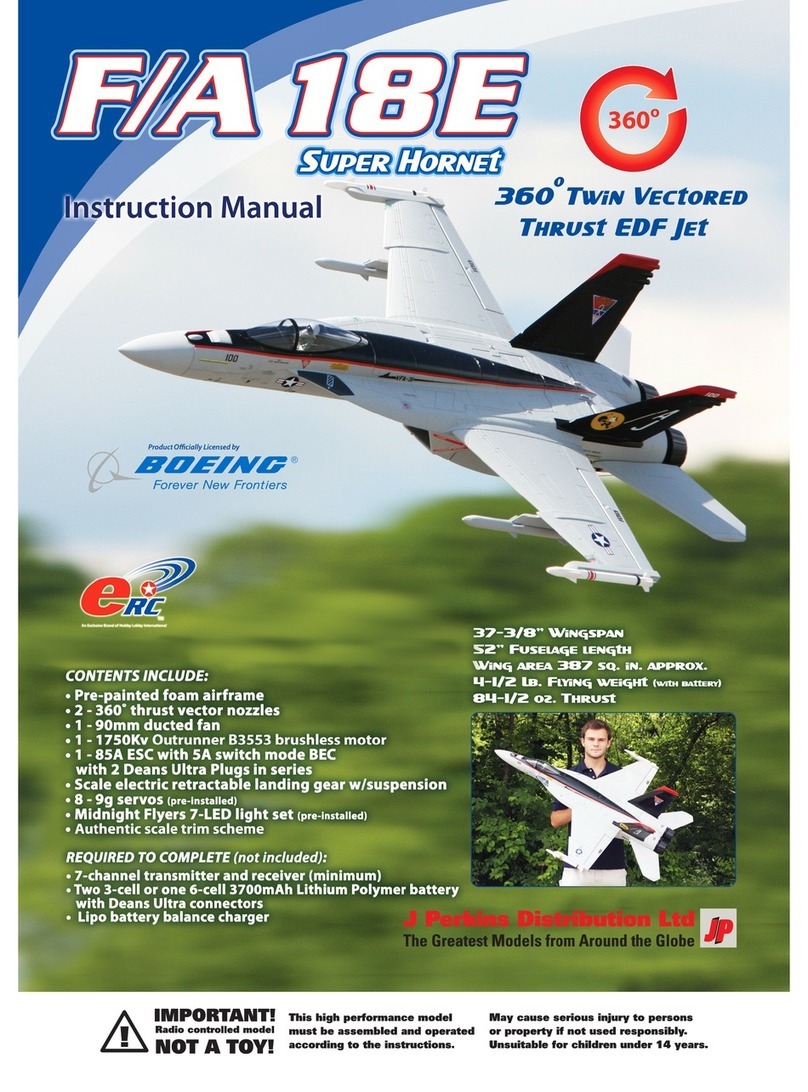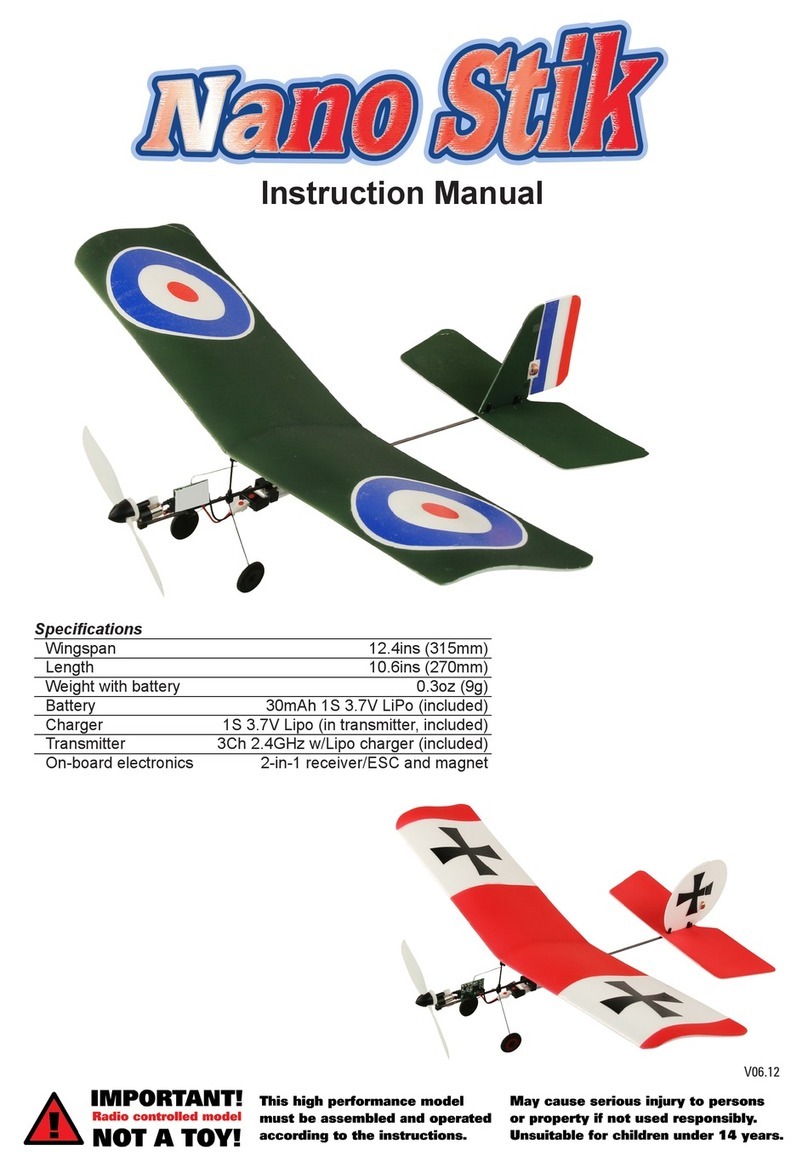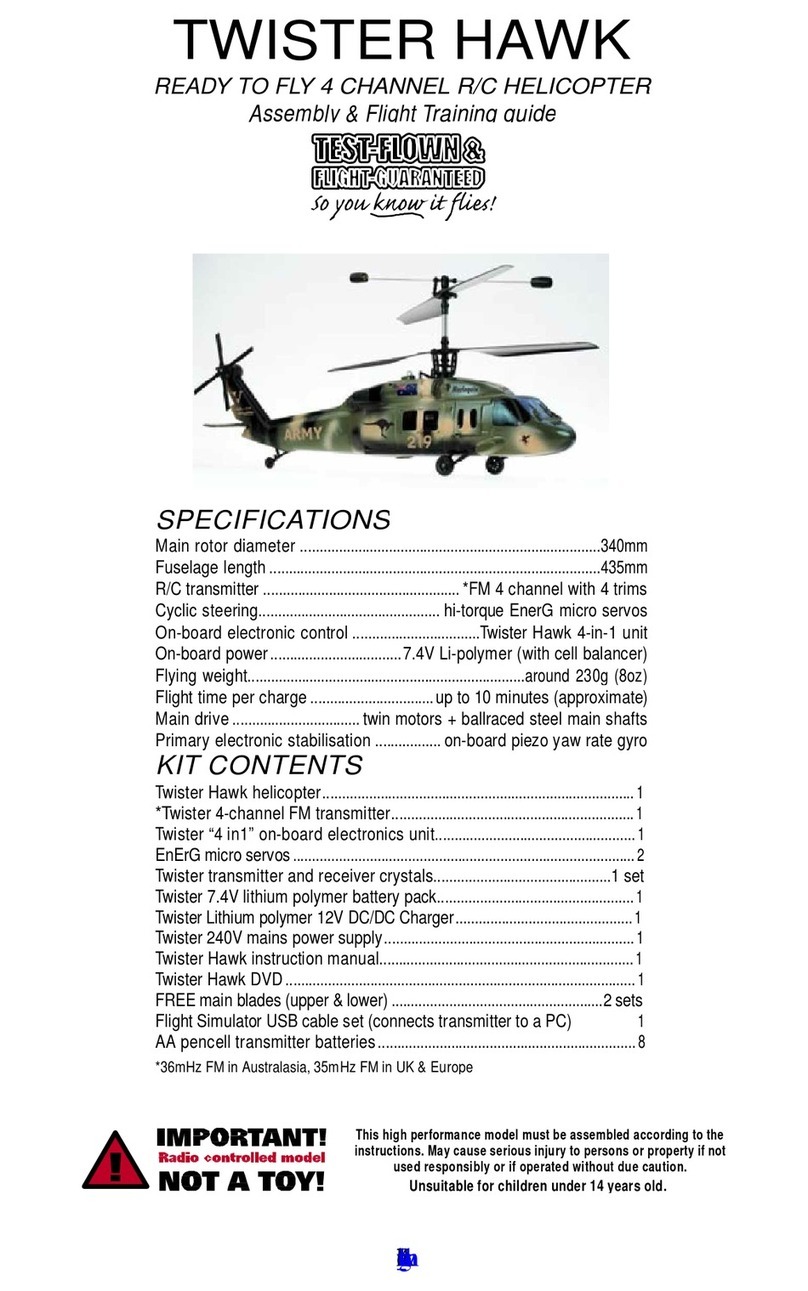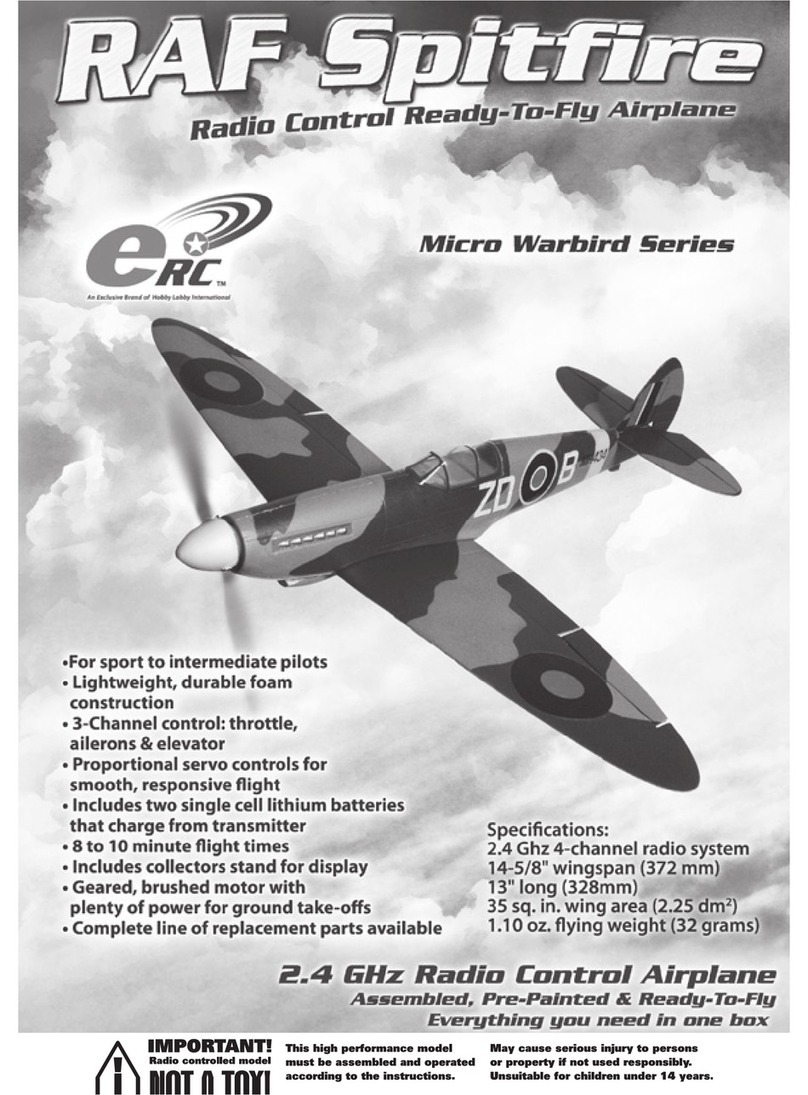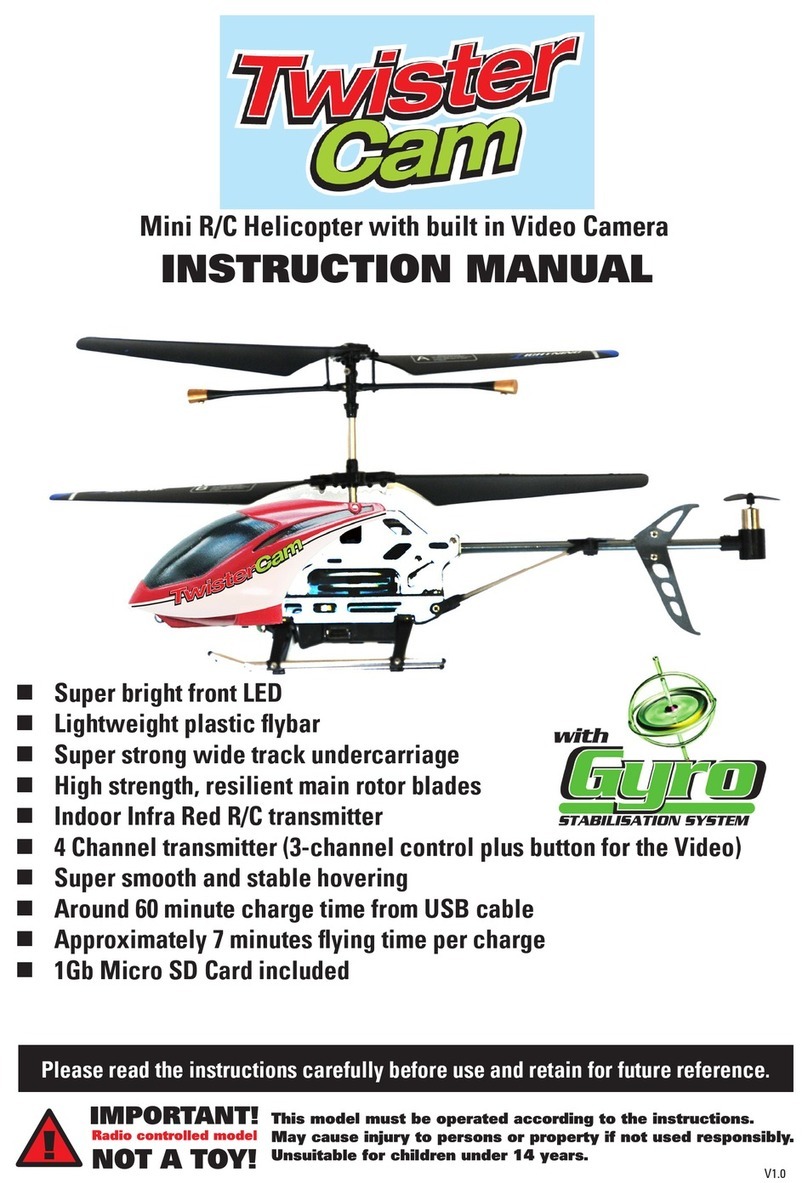2 P47 Thunderbolt Instruction Manual
Vital safety info
CAUTION! The P-47 Thunderbolt is not a toy.
It can cause injury to persons/animals and/or property
if not used correctly. It is unsuitable for persons under
the age of 14. You should take care and observe the
principles of safety when flying this model. In the UK,
we recommend you observe the British Model Flying
Association (BMFA) safety code at all times, which can
be found at the following address: http://www.bfma.org
In Australasia, please contact your hobby supplier.
YOU ASSUME ALL RISK.
Before beginning construction, please read this
document thoroughly and familiarize yourself with the
construction sequence of the P-47 Thunderolt. If any
information in this manual is unclear, please contact
your supplier for help. After reading this manual store
it in a safe place for future reference. This is a kit
for intermediate and advanced flyers, basic RC flying
knowledge and skills are required.
about the flying area
required
If you are a newcomer to R/C flight and have never flown
a radio control model before; it is vital you seek advice
from an experienced model pilot on where and how to fly.
Only fly in large open spaces that are approved for R/C
model flying and that are away from people, animals,
buildings, power lines, water or trees.
Only fly in bright sunny conditions where wind speed does
not exceed 5mph.
training, crashes & spares
The P-47 Thunderbolt has been designed to be strong and
very easy to repair, however, it is not invulnerable and
most people will break parts during their flying career.
This is quite normal. All parts are available as spares
from your supplier. Crash damage is not covered by
warranty.
important notice
This manual is supplied with all versions of the P-47
Thunderbolt. Please note that any reference in this
manaul to the Transmitter, Receiver, Charger and Power
supply are not applicable to the P-47 Thunderbolt version
supplied without TX/RX, Charger and Power supply.
contents
Vital safety info ............................................................... 2
About the flying area required ...................................... 2
Training, crashes & spares ............................................ 2
Guarantee/warranty ........................................................ 2
History of the P-47 ........................................................... 3
Kit contents ....................................................................... 3
Lithium polymer battery safety ..................................... 4
Lithium polymer flight battery ....................................... 4
Charging the flight battery .......................................... 5
Assembling the P-47 ....................................................... 6
Assembling the propeller ............................................ 10
Switch on the transmitter ............................................ 11
Transmitter layout .......................................................... 12
Mode II transmitter layout ........................................ 12
Mode I transmitter layout ......................................... 12
Pairing the esc and transmitter .................................. 12
Control checks ............................................................... 13
Preflight checks ............................................................. 14
Flying................................................................................ 15
Take-off ........................................................................ 15
Landing ........................................................................ 15
guarantee/warranty
J. Perkins Distribution Ltd and Model Engines (Aust.) Pty. Ltd. guarantee this product to be free of manufacturing and assembly
defects for a period of one year from time of purchase. This does not affect your statutory rights. This warranty is not valid for any
damage or subsequent damage arising as a result of a crash, misuse, modification or for damage or consequential damage arising
as a result of failure to observe the procedures outlined in this manual. Operation of this model is carried out entirely at the risk of
the operator. Please note that, whilst every effort is made to ensure the accuracy of instructions and material included with this
product, mistakes can occur and neither J. Perkins Distribution Ltd/Model Engines (Aust.) Pty. Ltd. nor it’s distributors will be held
liable for any loss or damage arising from the use of this model or for any loss or damage arising from omissions or inaccuracies in
the associated instructions or materials included with this product.
We reserve the right to modify the design of this product, contents and manuals without prior notification.
© 2009 J Perkins Distribution Ltd, Lenham, Kent, UK ME17 2DL. www.jperkinsdistribution.co.uk
Model Engines (Aust.) Pty. Ltd., Noble Park, Victoria 3174, Australia. www.modelengines.com.au.
All rights reserved. E&OE.
weee disposal
Do not dispose of this product with other household
waste. Instead, it is your responsibility to dispose of
your waste equipment by handing it over to a designated
collection point for the recycling of waste electrical
and electronic equipment. The separate collection and
recycling of your waste equipment at the time of disposal
will help to conserve natural resources and ensure that
it is recycled in a manner that protects human health and
the environment. For more information about where you
can drop off your waste equipment for recycling, please
contact your local council, your household waste disposal
service or the shop where you purchased the product.

